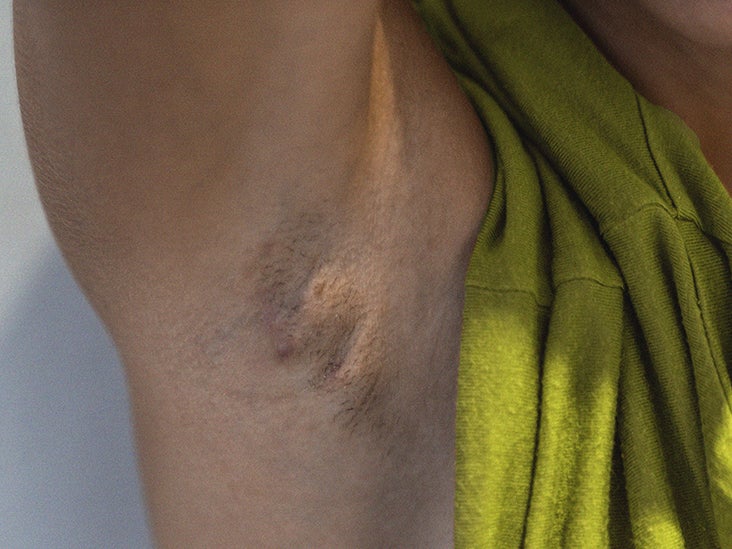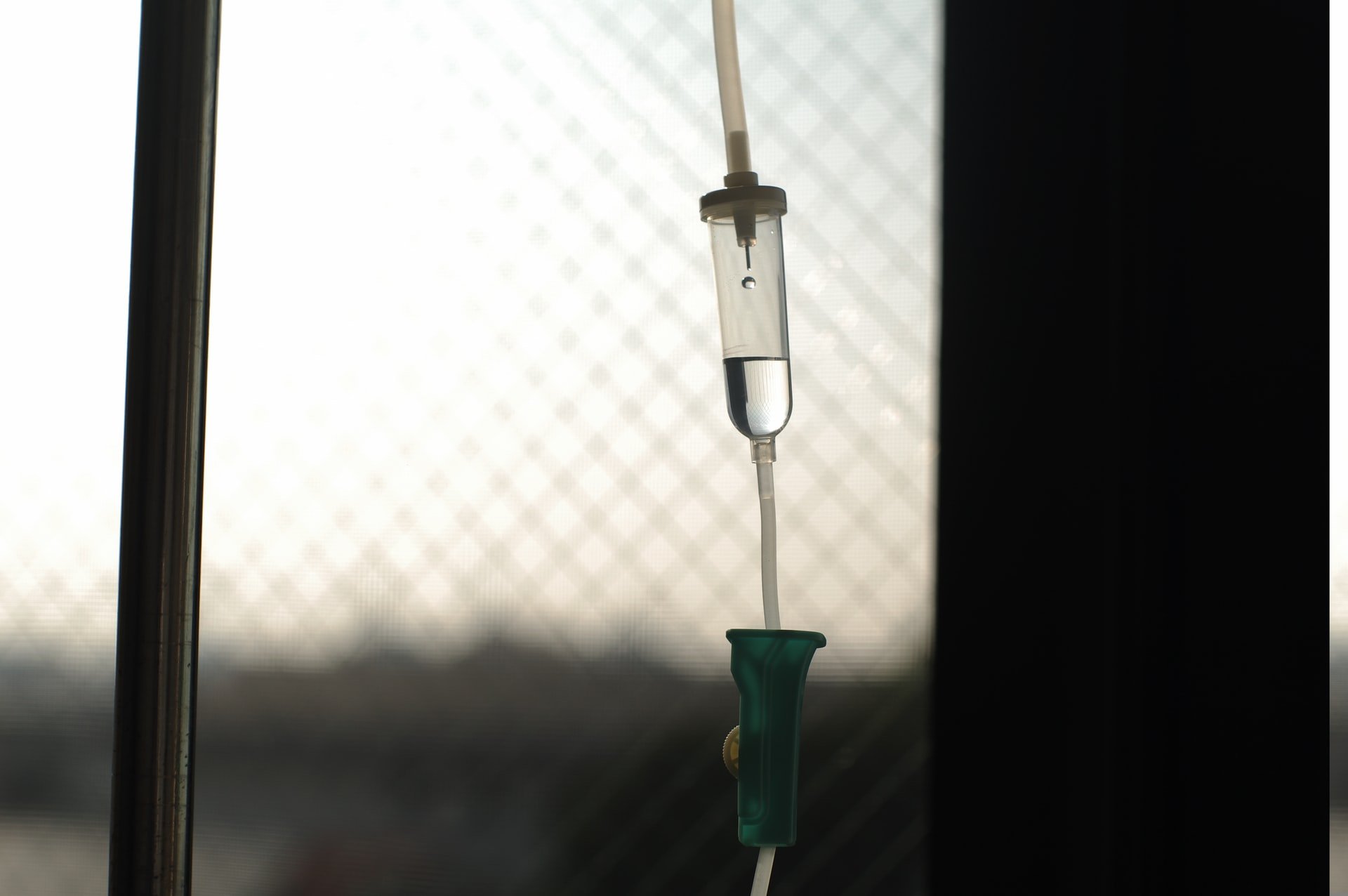Hidradenitis suppurativa (HS) causes painful lesions or pimple-like bumps to form in blocked hair follicles under the skin. Various medical and at-home treatments may help relieve pain.
HS lesions typically appear in the areas around certain body parts, including the armpits, breasts, groin, and anus, and they may form painful scars as the skin heals. HS is a chronic condition, meaning that these breakouts can get worse over time.
It is normal to have many questions about how best to manage HS pain. Keep reading to learn the basics about HS pain management, including how long a flare-up might last and how to minimize scars.
Although there is no cure for HS, various home and medical treatments can address the symptoms.
The best strategy to ease HS pain varies depending on the severity and stage of the condition. Early diagnosis and treatment are critical to managing the disease and alleviating pain.
Maintaining a moderate weight through diet and exercise, as well as quitting smoking, can slow the progression of the disease and reduce the severity of the symptoms. As a result, it can lessen HS pain, regardless of the stage of the condition.
Treatments that are effective in managing HS also help reduce HS pain. A person should work with their doctor to develop a personalized treatment plan.
Home management of pain
When doctors diagnose HS in the earlier stages, treatment and pain management may involve:
- taking over-the-counter (OTC) pain relievers, which include acetaminophen (Tylenol) and anti-inflammatory medications, such as ibuprofen (Advil)
- using topical analgesics, such as lidocaine (Xylocaine)
- applying warm compresses
- wearing loose-fitting clothing and keeping the skin cool, which may help prevent flare-ups
- maintaining good hygiene, such as by using antiseptics or antibacterial soaps
Medical intervention for HS pain
Sometimes, medications are necessary to address widespread, painful HS lesions. Examples include:
- topical treatments, such as antibiotics
- oral antibiotics
- retinoid pills
- hormonal medication, such as birth control pills or finasteride (Propecia)
- the diabetes drug metformin (Glucophage), to address inflammation
- the tumor necrosis factor-alpha (TNF-alpha) inhibitor adalimumab (Humira), which is the only medication that the Food and Drug Administration (FDA) have approved to treat moderate-to-severe HS
In severe cases, a doctor may recommend procedural interventions to drain or remove lesions.
If treatments and OTC medications are ineffective in managing HS pain, a person’s doctor may prescribe medications that block pain perception. These may include:
- anticonvulsants
- selective serotonin reuptake inhibitors (SSRIs)
- serotonin-norepinephrine reuptake inhibitors (SNRIs)
A dermatologist may also refer a person with HS to a pain specialist.
A person can also talk to their doctor about alternative pain relief options for HS. The American Academy of Dermatology suggest that these include medical cannabis and acupuncture.
The severity and duration of HS flare-ups vary from person to person. HS is a progressive condition, meaning that flare-ups and symptoms may get progressively worse.
Common triggers of HS flare-ups include:
- stress
- heat and perspiration
- weight gain
- changes in hormone levels, including around menstruation
- smoking
There is no cure for HS. However, managing stress, practicing good hygiene, quitting smoking, and maintaining a moderate weight through diet and exercise can help reduce the risk of HS flare-ups.
Following an HS treatment plan as a doctor has prescribed also helps prevent and minimize the severity of flare-ups.
Scars are made up of thick, fibrous tissue that forms in the place of healthy tissue as injured skin heals. They tend to lighten naturally on their own within 2 years. Deeper scars can affect the nerves and tissues beneath the skin, leading to pain and, potentially, reduced range of motion.
It is not always possible to prevent HS scarring. However, early treatment can help prevent HS from progressing, which, in turn, helps reduce the number of lesions and minimize painful scar tissue.
For people with deep HS lesions, massage may help break up scar tissue as the skin heals. Although it is not a common treatment for HS scars, in some cases, it may reduce pain, increase flexibility, and promote healing blood flow in the scar. A 2020 review of studies found that regular massage eases pain and reduces the thickness, surface area, and pigmentation (darkness) of scar tissue.
Once a scar forms, treatments cannot fully remove it, but they can minimize its size and appearance. Doctors may recommend other treatments to help reduce scar tissue, such as:
- surgical excision (removal) of scar tissue
- laser resurfacing
- freezing therapies
- collagen injections
- microdermabrasion
- microneedling
HS is a chronic condition that causes painful skin boils and lesions. Early treatment is essential to help keep the condition from progressing.
Following an HS treatment plan may prevent future HS flare-ups and address pain. Laser treatments or surgery (excision) can minimize painful scars. A person should talk with their doctor about other treatment options for reducing painful scar tissue.



